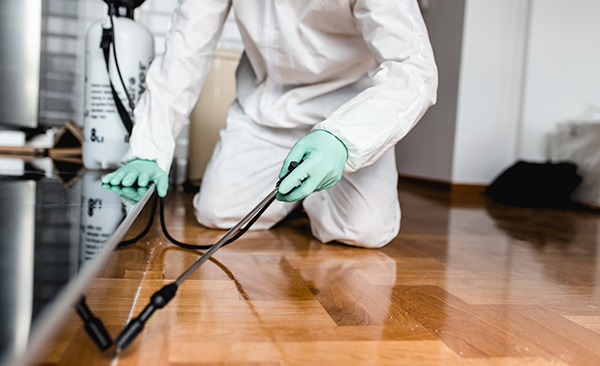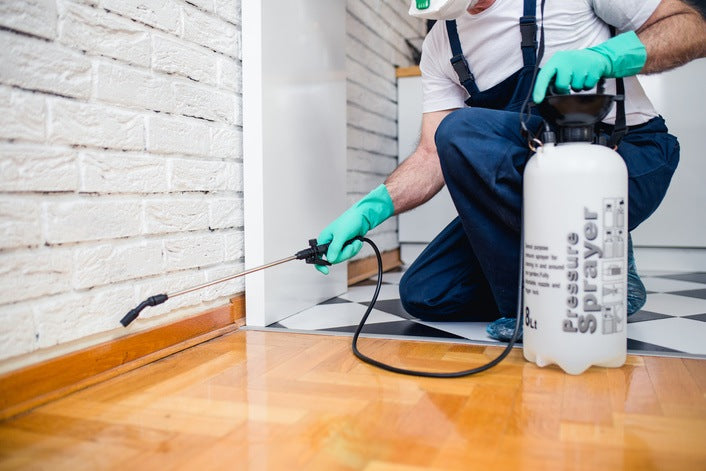Discovering Problem and Treatment Approaches worldwide of Parasite Control
The landscape of bug control encompasses a myriad of challenges, especially as invasions of usual home parasites proceed to advance. By integrating preventive procedures with advanced administration techniques, such as Integrated Parasite Administration (IPM), homeowners can much better safeguard their environments.

Usual House Vermin
When it pertains to managing our home, recognizing common house parasites is essential. These bugs not only disrupt our convenience yet can also pose wellness dangers and damages building. The most widespread house pests include ants, cockroaches, rats, termites, and bed insects.
Ants, often seen foraging in kitchen areas, can pollute food and establish big nests. Roaches, recognized for their resilience, can cause allergies and spread microorganisms. Rats, including computer mice and rats, can trigger architectural damage and lug diseases like hantavirus and salmonella. Termites, usually referred to as "silent destroyers," can compromise the integrity of wooden frameworks, resulting in pricey repairs. Bed bugs, although not disease carriers, can trigger considerable pain via their bites and result in emotional distress.
Identifying the indications of these insects, such as droppings, nests, or bite marks, is crucial for early intervention (Pest Control Lockhart). Appropriate cleanliness techniques, securing access factors, and keeping a clutter-free atmosphere are reliable preventative measures. By determining these common house pests and comprehending their behaviors, homeowners can take aggressive steps to minimize invasions, ensuring a much healthier living atmosphere
Recognizing Pest Infestations
Pest invasions can intensify promptly, turning a minor inconvenience into a substantial issue if not attended to without delay. Comprehending the nature of these infestations is crucial for effective monitoring. Parasites can get into property and business rooms for various reasons, including the look for food, sanctuary, or reproducing premises. Usual elements adding to invasions consist of bad hygiene, architectural susceptabilities, and seasonal changes that drive insects inside your home.
Recognizing the kind of bug is essential, as various species display diverse habits and reproductive prices. Rodents might develop nests in concealed areas while bugs like cockroaches prosper in damp atmospheres. Early discovery usually depends upon acknowledging indications such as droppings, gnaw marks, or unusual audios, which can show an issue before it comes to be severe.
Cozy, damp environments can promote the fast growth of parasite populations, while modifications in landscaping or construction can accidentally create favorable environments. An educated technique to recognizing these dynamics lays the groundwork for efficient bug administration approaches in the future.
Treatment Techniques and Methods
Effective therapy approaches and methods are crucial for minimizing pest invasions and bring back a safe environment. A multifaceted strategy is typically best, including chemical, biological, and mechanical methods customized to the details bug and the seriousness of the infestation.
Chemical therapies consist of the use of pesticides and herbicides, which can successfully get rid of parasites. Nonetheless, appropriate application and adherence to safety and security standards are important to decrease dangers to people and non-target microorganisms. Integrated Insect Monitoring (IPM) encourages you could try these out the cautious use chemicals as a last hotel, depending rather on monitoring and limit degrees to determine intervention requirements.
Biological control methods involve introducing all-natural predators or bloodsuckers to lower insect populaces. This strategy is significantly popular, specifically in farming settings, as it advertises environmental sustainability.
Mechanical techniques, such as catches and obstacles, supply immediate remedy for bugs without introducing chemicals. Options consist of sticky catches for insects or physical obstacles for rodents.
Ultimately, the selection of therapy technique need to consider the particular insect, the setting, and possible effects on human health and ecological communities. A well balanced mix of these strategies can properly manage infestations while advertising lasting insect control services.
Preventive Measures for Residence
Proactively attending to bug problems prior to he said they rise is essential for keeping a healthy and balanced home environment (Pest Control Lockhart). Implementing efficient safety nets can substantially decrease the likelihood of invasions, inevitably securing both your building and health

Correct landscaping also plays an important role in avoidance. Maintaining bushes and trees trimmed away from your house minimizes the opportunities of pests locating their way inside. Guarantee that drainage systems are working effectively to stop standing water, which can attract in insects and various other pests.
Last but not least, routine evaluations are recommended. Frequently checking for indicators of insect task permits for early intervention. By embracing these precautionary measures, house owners can develop an environment that is much less welcoming to parasites, therefore improving their overall lifestyle and minimizing the need for considerable insect control treatments.
Commercial Parasite Control Techniques
A detailed strategy to business parasite control is important for services aiming to keep a secure and sanitary atmosphere. Reliable approaches entail a mix of routine examinations, staff my website member training, and the implementation of Integrated Insect Administration (IPM) methods.
Normal examinations allow very early discovery of pest task, permitting prompt treatment. Organizations need to establish a routine timetable for these evaluations, concentrating on high-risk locations such as cooking areas, storage rooms, and waste disposal websites. Staff member training is just as important; personnel must be informed on the indicators of insect problems and the significance of reporting them instantly.
Carrying out IPM methods aids minimize pest problems sustainably. This consists of environment alteration, such as sealing access points and reducing clutter, in addition to utilizing all-natural deterrents before turning to chemical therapies.

Furthermore, working together with a licensed bug control company ensures access to expert understanding and innovative therapy choices. This partnership can result in customized pest control intends tailored to the certain demands of the company, minimizing risks and boosting overall efficacy. Ultimately, a proactive and educated technique promotes a pest-free environment, protecting both public health and wellness and company reputation.
Final Thought
To conclude, reliable bug control demands a comprehensive understanding of usual home parasites and their actions, coupled with targeted therapy methods. Applying preventative measures together with treatment strategies such as Integrated Bug Monitoring and organic control improves the capacity to minimize invasions. Normal evaluations and a combination of chemical and mechanical solutions additionally add to keeping pest-free atmospheres. Ultimately, a well-rounded strategy to pest administration is vital for guarding living areas from undesirable intruders.